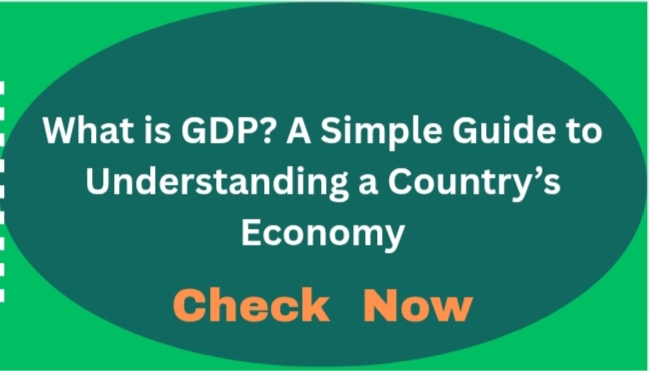What is GDP? A Simple Guide to Understanding a Country’s Economy
When it comes to understanding a country’s economy, Gross Domestic Product, or GDP, often takes center stage. But what exactly does this term mean? For many people, GDP can seem like an abstract figure buried in economic reports and news articles. However, grasping its significance is crucial for anyone interested in how nations operate financially.
Imagine trying to compare the health of different economies without a common measure. That’s where GDP steps in as a key indicator. It offers insights into the economic performance of countries around the globe—shaping decisions made by governments and businesses alike.
So, let’s break down this essential concept into simple terms and explore why it matters to you and me. Whether you’re curious about global markets or just want to better understand your own country’s financial landscape, diving into GDP will shed light on how we measure progress and prosperity. Ready? Let’s go!
A Simple Guide to Understanding a Country’s Economy
Understanding a country’s economy can feel overwhelming at first. However, breaking it down into manageable pieces makes the task easier.
At its core, an economy consists of all the activities related to production, consumption, and distribution of goods and services. These elements interact in complex ways to influence how well a nation is doing financially.
Key players include consumers, businesses, and the government. Consumers drive demand by purchasing products. Businesses respond by producing those goods or services while governments regulate these interactions through policies and regulations.
Various indicators help evaluate economic health beyond GDP—unemployment rates, inflation levels, and trade balances are just a few examples. Each offers unique insights into different aspects of economic performance.
As you explore further into economics, you’ll discover that each element plays a crucial role in shaping everyday life—from job availability to prices at your local supermarket. Understanding these basics opens up new perspectives on global issues too!
What is GDP ?
Gross Domestic Product, or GDP, is a key indicator of economic health. It measures the total value of all goods and services produced within a country over a specific time period. This figure helps us understand how well an economy is performing.
GDP can be calculated using three different approaches: production, income, and expenditure. Each method provides insight into various facets of economic activity.
When GDP rises, it often signals growth and prosperity. Conversely, a declining GDP may indicate recession or economic struggles. Thus, policymakers closely monitor this metric to guide decisions.
It’s important to note that while GDP offers valuable insights into an economy’s size and performance, it doesn’t capture everything. Factors like income inequality and environmental impact are not reflected in this single number but are crucial for understanding overall well-being in society.
